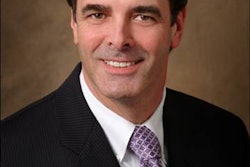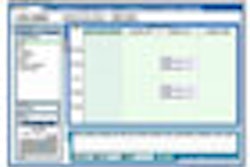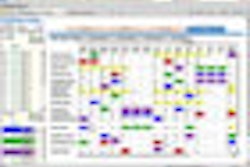ORLANDO - There is broad agreement that healthcare information technology's greatest potential lies in reducing medical errors, cutting the cost of care, and easing human suffering. That this hopeful vision will come to fruition, however, is not ensured.
"None of that will happen unless people are confident their information will be appropriately protected," stated Michael Leavitt, secretary of the U.S. Department of Health and Human Services (HHS). "The key is trust and trust has to be built locally. People intuitively don't trust distant bureaucracies, but they do trust locally. They trust people they know."
Leavitt's comments came in his keynote address at the 2008 Healthcare Information and Management Systems Society (HIMSS) annual conference.
Citing progress on several fronts to create uniform national IT standards that can be promoted and implemented locally, Leavitt said "privacy and security protection will be the underpinning of a successful network for health information exchange."
AHIC recommendations
One group working toward the goal of maximum information security is the federal American Health Information Community (AHIC). AHIC was chartered in 2005 to recommend ways to accelerate the development and adoption of healthcare IT, in part, through interoperability standards that will allow secure information exchange between different electronic systems.
To date, HHS has recognized 50 different AHIC-recommended standards to lay the foundation of interoperability among electronic health records. Another 60 standards are presently being evaluated by HHS.
This year, HHS funded the creation of AHIC 2.0 to continue AHIC's work by adding "a sustainable ongoing business model that would be insulated from the political winds that may blow," Leavitt said. "By establishing AHIC 2.0 this year, we can avoid the inevitable pause that happens anytime there is a transition between two administrations."
CHIT certification
The independent, nonprofit Certification Commission for Healthcare Information Technology (CCHIT) is also helping to create a path toward interoperability. CCHIT has certified approximately 75% of all electronic health record systems that currently are available on the market today. Last month, CCHIT certified more than a third of the vendors for computerized physician order entry (CPOE) products for inpatient settings. The certifications are good for three years.
Among the drivers in the campaign for uniform standards is "e-prescribing," Leavitt said. The technology now is available and it can save money. "We can no longer afford to pay reimbursements for people to prescribe in the most expensive way," he said.
To foster adoption of healthcare IT systems, HHS on October 1, 2007, announced a new demonstration project from the Centers for Medicare and Medicaid (CMS) to financially reward healthcare providers that use CCHIT-certified electronic medical records to improve the quality of patient care.
Community involvement
The demonstration project will involve 12 communities around the U.S. and target small and medium-sized physician practices, from which most Americans receive healthcare. HHS expects to involve as many as 1,200 small and medium-size primary care physician practices in the project, and bring healthcare IT to an additional 3.6 million Americans.
Medicare reimbursements will increase annually for participating physicians, as they report their progress with CCHIT-certified products to CMS. "By the third, fourth, and fifth years of the project," Leavitt added, "we will pay them more for demonstrating the value of the system."
To bring national standards to the control of communities, HHS also has created charter value exchanges, which are designed to bring together healthcare professionals, such as physicians and pharmacists, as well as insurers within a community to exchange quality and price information.
Of the 38 applications received, HHS selected 14 groups for its inaugural class of charter value exchanges. As the charter value exchange agrees to use national standards, HHS, in turn, will provide Medicare information to the locals to advance health IT and patient care.
Information exchanges
By autumn, nine communities, in addition to the Department of Veterans Affairs and the Department of Defense, will demonstrate the exchange of health information through a secure virtual health information network. Today at the HIMSS 2008 meeting, Dr. Robert Kolodner, national coordinator for health IT within HHS, announced that the Social Security Administration (SSA) has joined the network.
"Each year about 3 million patients file for disability benefits with SSA," Kolodner said. "The SSA requests 15 to 20 million records and almost half a billion dollars are spent by SSA to obtain information on those patients. Officials there see the potential for significant taxpayers by using a robust, dependable, secure nationwide health IT infrastructure."
This year, Kolodner's office also plans to release a confidentiality, security, and privacy framework to "foster trust in the exchange of electronic information," he said.
By Wayne Forrest
AuntMinnie.com staff writer
February 26, 2008
Related Reading
HIMSS survey: EMR tops healthcare IT plans, February 25, 2008
Regulatory carve-outs hope to spur HIT growth in U.S., February 28, 2007
High-tech communication tools improve patient care, studies find, December 6, 2007
Healthcare facilities vigorously enforce patient privacy, August 27, 2007
Copyright © 2008 AuntMinnie.com



















